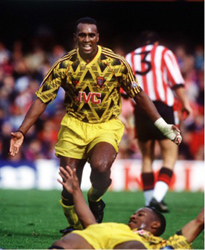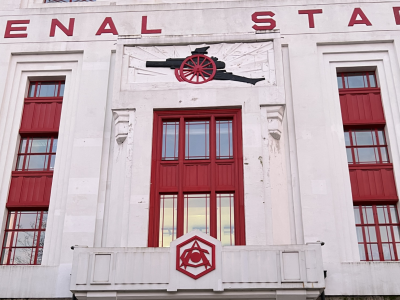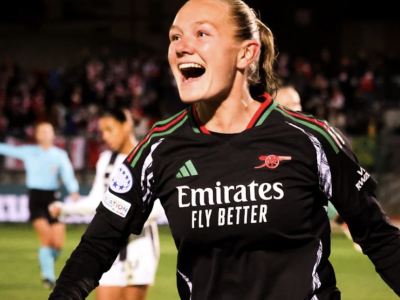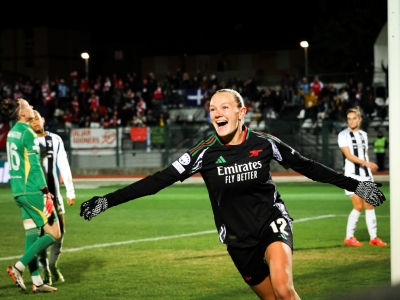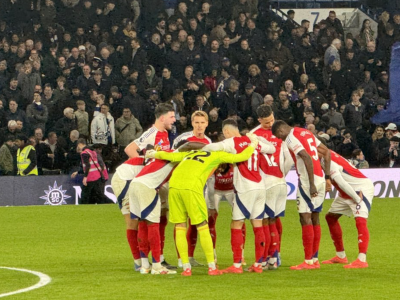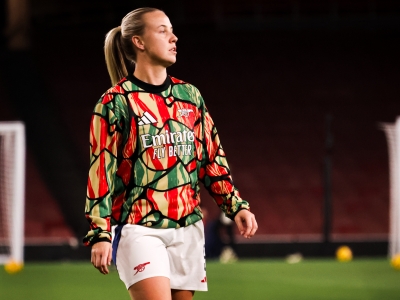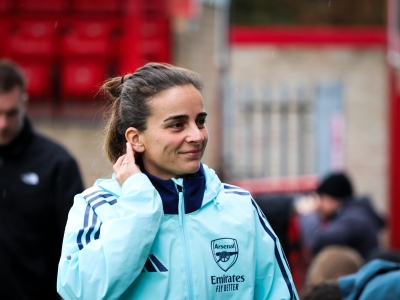If you’ve been following this Flashback series over the last season, you’ll have noticed that they tend to revolve around the side who Arsenal are playing the following weekend. As you’re aware, this week we’re playing AFC Bournemouth and due to the dearth of previous fixtures between the two sides, this week’s editions will centre on the side who we were playing on Tuesday night – Southampton FC.
Southampton are a bit an oddity in that they do not have a particularly grand history and haven’t won a great deal of trophies in their time – and yet a Southampton F.C. all-time greatest XI (which would probably contain like of Peter Shilton, Alan Ball, Matt Le-Tissier, Mick Channon, Kevin Keegan, Ted Drake, Alan Shearer) would probably be as good anyone’s.
Southampton started life in 1885 as Southampton St. Mary’s (hence their nickname of the Saints), who were formed by members of the Young Men's Association of the St. Mary's Church – the largest church in the Southampton area, which traces its origins to the first Saxon settlements of the 7th century and whose other claim to fame is being the inspiration behind the song ‘The Bells of St. Mary’s’, which was written following a visit from lyricist Douglas Furber (who also wrote the Lambeth Walk) in 1914. This song gained a new lease of life in 1945 as the soundtrack to the film of the same name which starred Ingrid Bergman and Bing Crosby (the latter re-recorded the song, as have artists as diverse as Perry Como, the Drifters, Phil Spector, Andy Williams and Sheryl Crowe in the years since).
The Saints first period of notoriety came on joining the Southern League as founder members in 1894. During this period, the Southern League was considered on a par with the Football League and Southampton would finish within the top three for twelve seasons in a row between 1895 and 1906, winning the Southern League three times in a row between 1896/97 and 1898/99 as well as in 1900/01 and back to back in 1902/03 and 1903/04. Southampton would also reach the FA Cup final twice however defeated on both occasions at Crystal Palace, losing 0-4 to Bury in 1900 and 1-2 in a replay to Sheffield United in 1902. Southampton moved to the Dell in 1898 and stayed in the Southern League until 1920/21 when they joined the Football League after it had introduced a third tier that season.
In their first term in the Football League the Saints finished as runners up, though weren’t promoted and the following season the third tier was split regionally with Southampton playing in the Third Division South and winning its inaugural title in 1921/22. The Saints would remain in the second tier for the next thirty years, with their first piece of notoriety since joining the Football League reaching the FA Cup Semi Final in 1927, which lined up their first ever meeting with Arsenal. The Gunners reached their first ever FA Cup Final after defeating Southampton 2-1 at Stamford Bridge with goals from Charlie Buchan and Joe Hulme. A Southampton away trip to Brentford would also be captured by Pathe News in 1934.
During their three decades in the second tier (rather like in recent years), Arsenal poached talent from Southampton such as Tom Parker - not Elvis’s manager, but Arsenal’s first FA Cup and League Championship winning captain in the early thirties, who also returned to the Dell as manager at the end of the 1930s. Ted Drake - whose record with the Saints was an incredible 47 goals in 71 games. Arsenal had been pursuing Drake since Herbert Chapman was manager, but Southampton refused to sell until financial dire straits forced them to in 1934. Drake also played Cricket for Hampshire, as did Don Roper who signed for Arsenal in 1947 and stayed at Highbury for a decade before moving back to Southampton in 1957.
For the first few years after the Second World War, as football crowds grew player unrest at the maximum wage and restraints on their employment was beginning to grew as seen by this 1948 piece from Pathe News, which included Southampton manager Bill Dodgin Snr. His son, Bill Dodgin Jnr. spent nine years at Arsenal making close to two hundred appearances for the club. Southampton dropped into the Third Division South in 1953 and stayed there for the rest of the 1950s before winning the Third Division South title in 1959/60. The Saints spent six years in the second tier (with cine film shots uploaded here on YouTube circa 1961/62) the highlight of which had been an FA Cup run in 1962/63 which resulted in Southampton reaching the Semi Final against Man United, losing 0-1 to a Denis Law goal.
Also, Southampton was on the forefront of women’s football as shown by this Pathe News footage from 1966. Ladies side Red Star Southampton won the inaugural Women’s FA Cup in 1971 and achieved a hat-trick of Cups by 1973. Red Star reached every WFA Cup Final throughout the 1970s, winning on seven occasions, as well as adding an eighth in 1981 (although the side were not officially affiliated to Southampton FC until the 1990s). Back to the men’s game and the Saints would finally achieve promotion to the top tier of English football in 1965/66, finishing as runners up to Man City in the old Second Division.
The Saints side during the 1960s included Ron Davies (whose brother Paul briefly played for Arsenal in the early 70s), Martin Chivers (who later joined Spurs) and Terry Paine who played a record eight hundred times for Southampton, later playing for Hereford and establishing a record number of League appearances which remained unsurpassed until broken by Peter Shilton in the 1990s. The first League meeting between Arsenal and Southampton took place on Boxing Day of 1966 at Highbury with Arsenal winning 4-1 with two goals apiece from John Radford and George Armstrong, while Ron Davies was on target for Southampton.
Arsenal’s first visit to the Dell took place the following day, with the Saints inflicting a 1-2 defeat on the Gunners with goals from Terry Paine and Jimmy Melia for the Saints, while Colin Addison was on target for the Gunners. The Saints also achieved their first victory at Highbury, inflicting a 0-3 defeat on Arsenal in April 1968, while the following September Arsenal’s first win at the Dell was secured by a 1-2 victory, with two goals for John Radford and Terry Paine on target for Southampton. Southampton’s second game into the 1969/70 season was a visit to Old Trafford to play Manchester United fifteen months on from their first European Cup win. The Saints ran out 4-1 winners with four goals for Ron Davies.
One month on, Arsenal would be drawn away to Southampton in the second round of the League Cup. The game at the Dell ended in a 1-1 draw with Bob McNab on target for Arsenal and Mick Channon scoring for Southampton. The replay was played forty eight hours on at Highbury with Arsenal winning 2-0 through two goals from George Graham. During Arsenal’s double season, the Gunners would meet Southampton at Highbury on Boxing Day. 1970 was the last time London experienced a white Christmas and twenty four hours on, 34,169 fans braved the snow to watch Arsenal in red shorts with an orange ball draw 0-0 with the Saints. The return fixture came on Easter Saturday, with Arsenal running out 2-1 winners with goals from Frank McLintock and John Radford, while Terry Paine was on target again for Southampton.
The following season, Southampton met eventual champions Derby in August, returning with a 2-2 draw. In October 1971, Arsenal’s visit to the Dell resulted in a 1-0 win for the Gunners. In November, the visit of Man United saw a 2-5 defeat for Southampton with a hat-trick for George Best. A month later saw a 3-3 draw with West Ham at the Dell. The most noteworthy Southampton fixture of 1971/72 however would be the Saints 0-7 defeat away at Leeds Utd, particularly while Leeds were stringing thirty passes together and an excitable Barry Davies on MOTD proclaiming that: ‘to say Leeds United are playing with Southampton is the understatement of the season. Poor Southampton just don`t know what day it is. It is almost cruel’.
At the end of that same month, Arsenal grabbed the first of what would be four successive 1-0 wins over Southampton at Highbury, with a George Graham goal. The Saints finished the season just one place above the relegation zone, lasting just two further seasons before dropping into the second tier at the end of 1973/74, becoming the first side to finish third from bottom and experience relegation after the Football League extended the number of sides relegated from the top flight to three that very season. Southampton spent four seasons in the second tier and by 1975/76 they were joined by Chelsea in the old Second Division who the Saints thrashed 4-1 at the Dell.
The highlight of Southampton’s time in the second tier would be the club’s greatest achievement – their 1976 FA Cup Final win against overwhelming favourites Man United at Wembley. With Man. United’s comparatively young side against experienced old campaigners such as Jim McCalliog, Peter Rodrigues and Peter Osgood, this would be billed as ‘Dads Army versus the Teenage Rampage’. The Saints secured a 1-0 win with a goal from Bobby Stokes seven minutes from time, becoming only the second side from out of the top flight to win the trophy in over forty years. The victorious Saints were interviewed here after the final by Gerald Sinstadt, followed by a quarter of a million people turning out for the victory parade (a figure which is actually greater than the town’s population!).
In 1976/77, while in the still in the second tier Southampton managed to poach Arsenal’s Alan Ball away from Highbury, as well as progress as far as the Quarter Finals of the European Cup Winners Cup, defeating Olympic Marseille 5-2 on aggregate (with a 4-0 win at the Dell) in the first round and eliminating Carrick Rangers 9-3 on aggregate in the second round. On reaching the last eight the Saints beat Anderlecht 2-1 on the night, but were eliminated 3-2 on aggregate. Southampton returned to the top flight as second tier runners up in 1977/78. Southampton’s first visit to Highbury on returning to the top flight would come in October 1978, with a 1-0 win for the Gunners secured by a Liam Brady goal.
Back at the Dell in March 1979, the Saints inflicted a 0-2 defeat on Arsenal. Two weeks on, Southampton would reach Wembley again, this time in the League Cup. The Saints however suffered a 2-3 defeat to Brian Clough’s Nottingham Forest. Forty eight hours on, Arsenal met Southampton at the Dell in the FA Cup Quarter Final which ended in a 1-1 draw, with David Price on target for the Gunners. A further forty eight hours on from that back at Highbury, Arsenal ran out 2-0 winners to progress to the Semi Finals with two goals from Alan Sunderland. The halcyon age for Southampton in the League however would be during the 1980s, coinciding with the signing of European Footballer of the Year Kevin Keegan in 1980.
The thought of returning to England was enough for Kevin Keegan to sing about (albeit off key). Being so musically inclined, Kev marked his return back to England by co-hosting Top of the Pops with the now infamous DLT (whose infamy was enough to prevent a repeat broadcast last year on BBC4). Kev is asked by Travis before introducing Kelly Marie’s ‘Feels Like I’m in Love’ whether he likes red heads, to which Kev replies like he ‘likes Alan Ball’, then playing alongside him at Southampton. As well as Ball, around this period the Saints would have another former Gunner in the ranks in the shape of Charlie George, whose headed goal against Sunderland cancelled out an earlier equaliser from Sunderland’s current boss Sam Allardyce in a 2-1 win for the Saints.
The Saints visit to Highbury in 1980/81 would come in August, where the two sides played out a 1-1 draw with Frank Stapleton on target for the Gunners. A month on, the Saints played Keegan’s old club Liverpool at the Dell and achieved a 2-2 draw. Arsenal visited the Dell in November 1980 and suffered a 1-3 defeat. Other notable results for the Saints that season would be a 3-0 away win at Birmingham in January and a 2-2 draw with Ron Atkinson’s West Brom in February. Southampton’s first season with Kevin Keegan saw what was at the time their highest finish, reaching sixth place in the top tier. Keegan’s time at the Dell however would only last two seasons.
In Kev’s second and final season in 1981/82. The Saints would again inflict another 1-3 defeat on Arsenal at the Dell in January 1982. Another notable result would be a 2-1 win over Man City a month later. The Saints topped the old first division for two months from the end of January to the end of March, however failed to win seven of their last nine games and as a result slipped to seventh in the league. A fall out developed between Keegan and Lawrie McMenemy over the defence which Keegan felt was undermining the Saints attacking flair (as exemplified by a 5-5 draw with Coventry in the Saints’ penultimate home fixture of the season). Keegan’s last visit to Highbury as a player came with Southampton (as well as his last appearance for the Saints) on the last day of the 1981/82, which saw a 4-1 victory for Arsenal with goals from John Hawley, Stewart Robson and two for Paul Davis.
Keegan was transferred to Newcastle in the summer of 1982, as was his strike partner Mick Channon who lasted just a month on Tyneside. During the calendar year of 1982 however, Southampton would field no fewer than six different England captains past and present, which included Channon and Keegan, along with Alan Ball, Mick Mills, Dave Watson and Peter Shilton who signed from Nottingham Forest after Espana ’82. The Saints first season without Keegan saw a 3-3 draw away at Luton at the end of November 1982. Southampton slipped to twelfth position in 1982/83, though would make up for the dip the following term in what would be Southampton’s best ever League season to date. The Saints first home win of the season saw a 0-1 defeat inflicted on Arsenal with a goal from Iain Baird.

